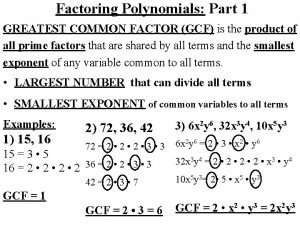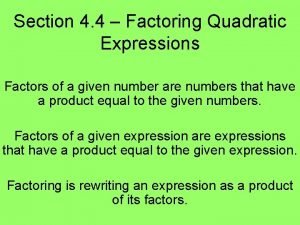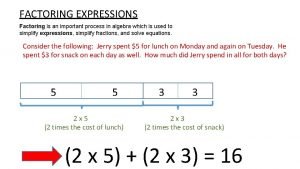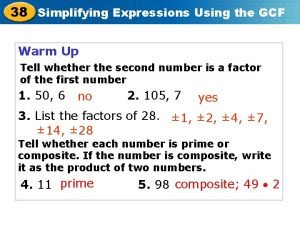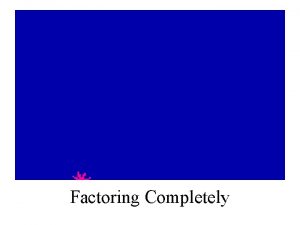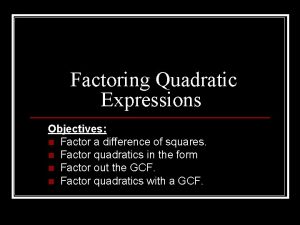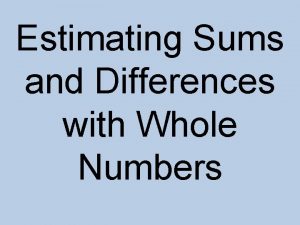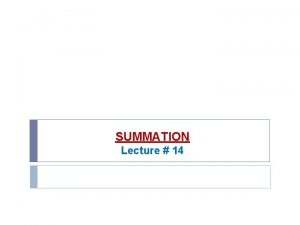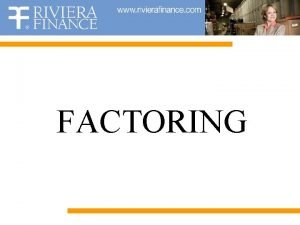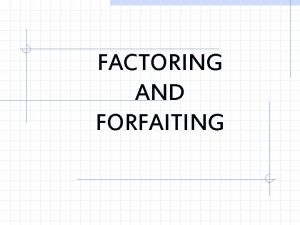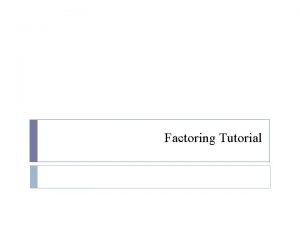Factoring Sums When we factor expressions we are









- Slides: 9

Factoring Sums When we factor expressions, we are being asked to rewrite the expression with the GCF. We are not being asked to evaluate (solve) the expression. Example: 36 + 42 = 6 x (6 + 7) GCF of 36 and 42 other factor of 36 other factor of 42

Let’s take a closer look! 36 + 42 = 6 x (6 + 7) Here are 36 and 42 “things. ”

Let’s take a closer look! 36 + 42 = 6 x (6 + 7) Here are 36 and 42 “things. ” We can divide these 42 “things” into groups of 2 or 3 or 6 evenly. Since 6 is the greatest number of groups, then we will show division using 6.

Let’s take a closer look! 36 + 42 = 6 x (6 + 7) Here are 36 and 42 “things. ” 6 Groups

Let’s take a closer look! 36 + 42 = 6 x (6 + 7) Here are 36 and 42 “things. ” 6 Groups 6 in each group here 7 in each group here

Let’s take a closer look! 36 + 42 = 6 x (6 + 7) Here are 36 and 42 “things. ” 6 Groups 6 in each group here 7 in each group here So 36 + 42 can be written as 6 groups of 6 and 7…

36 + 42 = 6 x (6 + 7) Using the distributive property of mathematics, we can check our answer. 6 x (6 + 7) Take the GCF of 6 and multiply it to each addend. You should get the expression that was first given to you, 36 + 42.

Here are some other examples of expressions that were factored completely using the GCF and the distributive property. And here is the check using the distributive property 12 + 18 = 6(2 + 3) = 12 + 18 40 + 72 = 8(5 + 9) = 40 + 72 100 + 36 = 4(25 + 9) = 100 + 36

 Mikael ferm
Mikael ferm The greatest common factor of 9x^2y 27xy^2 and 45x^2y^2
The greatest common factor of 9x^2y 27xy^2 and 45x^2y^2 4-4 factoring quadratic expressions
4-4 factoring quadratic expressions Factoring is important process
Factoring is important process Factor the simplified expression using the gcf
Factor the simplified expression using the gcf Factor by gcf
Factor by gcf Gcf of 2 and 4
Gcf of 2 and 4 Factoring polynomials gcf and quadratic expressions
Factoring polynomials gcf and quadratic expressions Estimating sums and differences of whole numbers
Estimating sums and differences of whole numbers Sigma notation for sums
Sigma notation for sums

